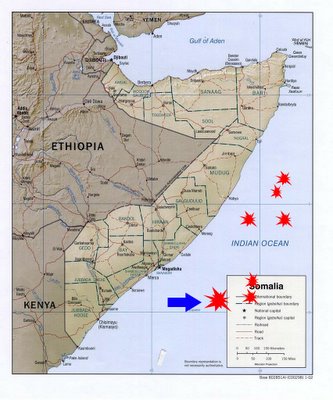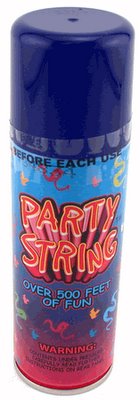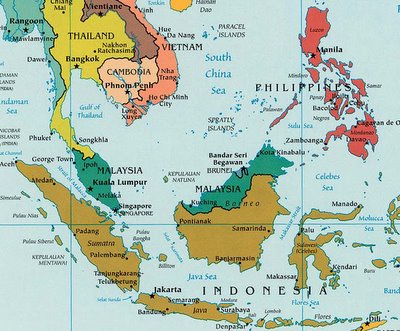
Time discovers modern piracy here. Just a few comments on a first read:
(1) Fact confusion- While asserting that the worst area for modern piracy remains the Strait of Malacca, the actual trend line seems to be heading down in that area since the littoral states have begun to act in concert to clean up the mess. While there are still attacks, it is looking up. Of course, Somalia has no effective government and any piracy clean up must be undertaken by outsiders. And the outsiders need to have some compelling interest to take action. So far, the ship seizures and attacks haven't lit the fuse of anyone with sufficient naval and military assets to take action, though there is some indication that the Royal Navy may do something.
(2) Location confusion - Somalia has the longest coastline on the African continent. It is important to understand that an attack on a ship 100 miles off Mogadishu is a very long way from Djibouti up near the mouth of Bab el-Mandab chokepoint. Don't get confused by the geography.
(3) Importance confusion- Coalition forces are active in the Gulf of Aden and near the Bab el Mandab chokepoint because they are vital sea lanes of communication for oil, among other things. The recent spate of pirate attacks are happening off the east coast of Somalia (see the map, which has the most recent reported attacks marked on it - blue arrow points to recent cruise ship attack). While it is a sea route to Kenya and a possible coastwise route around Africa, the fact is that the Suez canal gets more traffic and the long round Africa trip is relatively rarer except for smaller coast-wise shipping and ships too big to fit through the canal. Note that the ships seized off Somalia are smaller vessels and not large container and crude carriers (though a few of them have reported being attacked or followed by suspicious boats). There are pirates who have attacked shipping in the Gulf of Aden (especially going after some yachts) but the ship seizures have mostly been elsewhere. Of course, there are exceptions as in the recent seizure of a ship moving sugar from Brazil to Yemen. In short, the inshore and offshore areas of eastern Somalia is not a major sea lane.
(4) Timing confusion- There has long been concern over possible sea going terrorism. For several months various international agencies and the US Office of Naval Intelligence have been issuing warnings (and here) for merchant shipping to stay well off the coast of Somalia but some ships, including the Seabourn Spirit have apparently chosen to ignore the warnings. In short, this is not a new problem and some simple steps (like avoiding the area of recent attacks) could increase ship safety.
(5) Priority confusion- Some have called for the US Navy to be more active in pursuing the pirates of Somalia especially based on the recent cruise ship attack. However, even the US Navy has limited assets, and most of them are being used for activities deemed to be higher priority than piracy patrol work off Somalia (which, as noted above, is not on a sea lane of vital interest to the US). Absent a compelling national interest, there is little reason for the US to act.
UPDATE: An interesting nautical discussion on going over here.
UPDATE2 (15 Nov 05): More recent piracy/terrorism posts here and here.


















